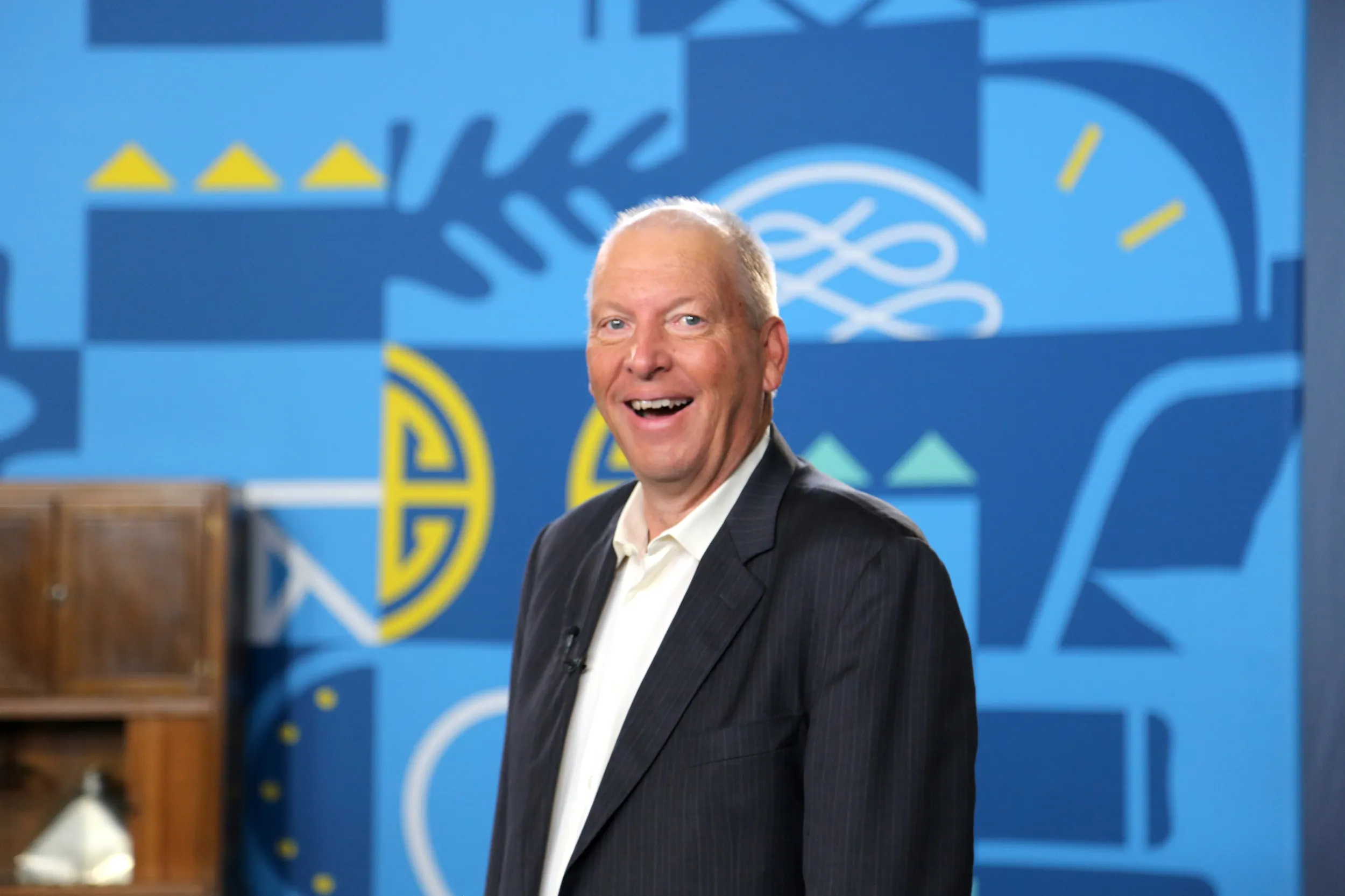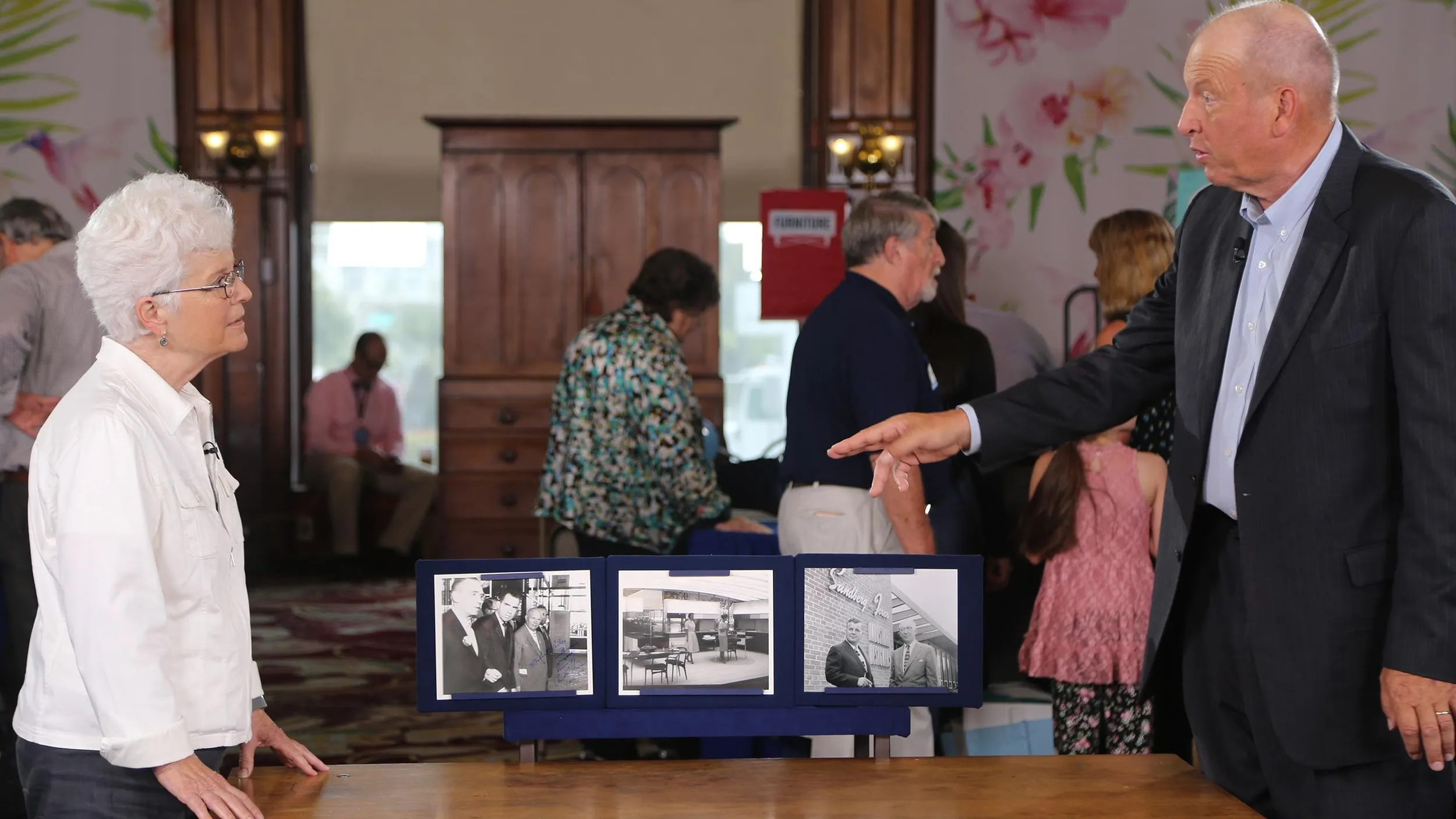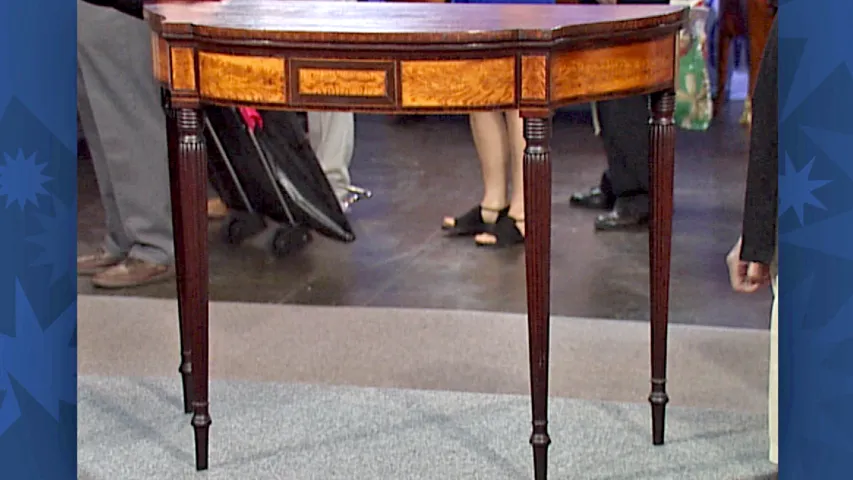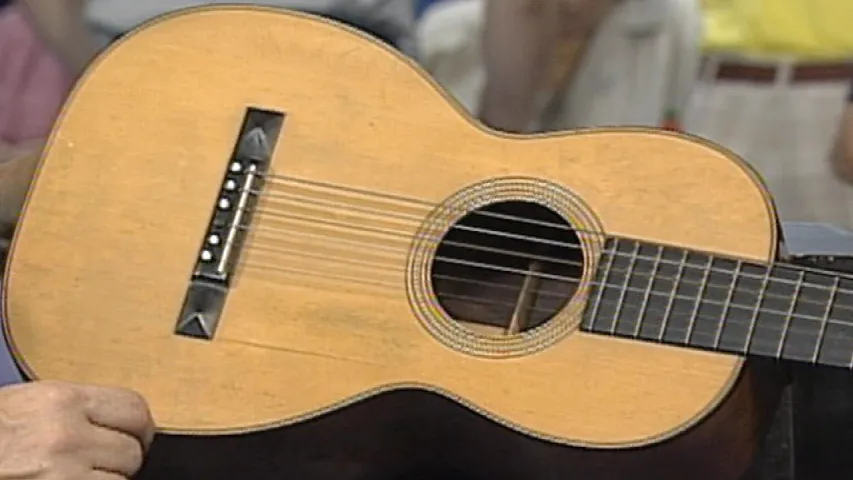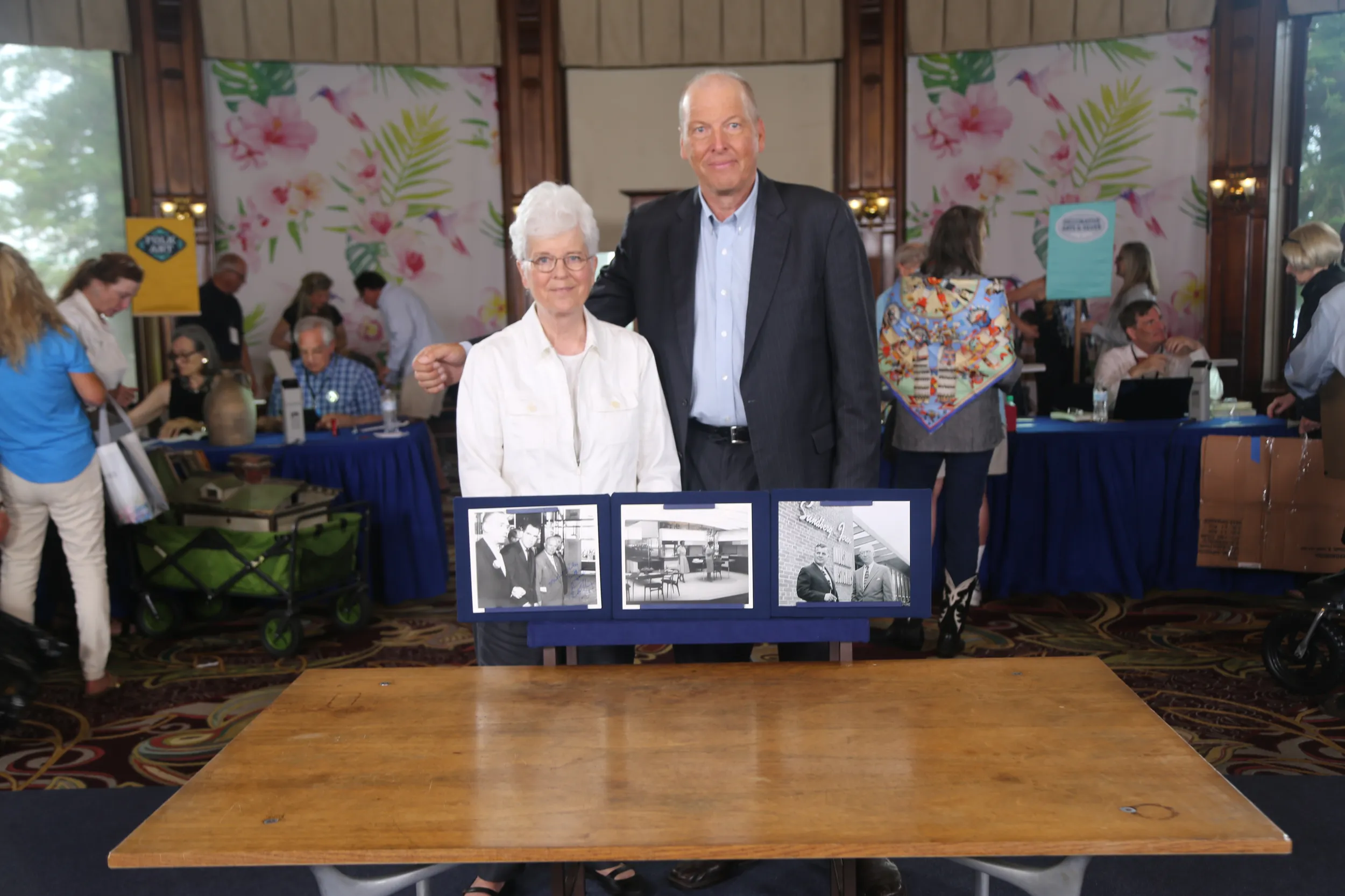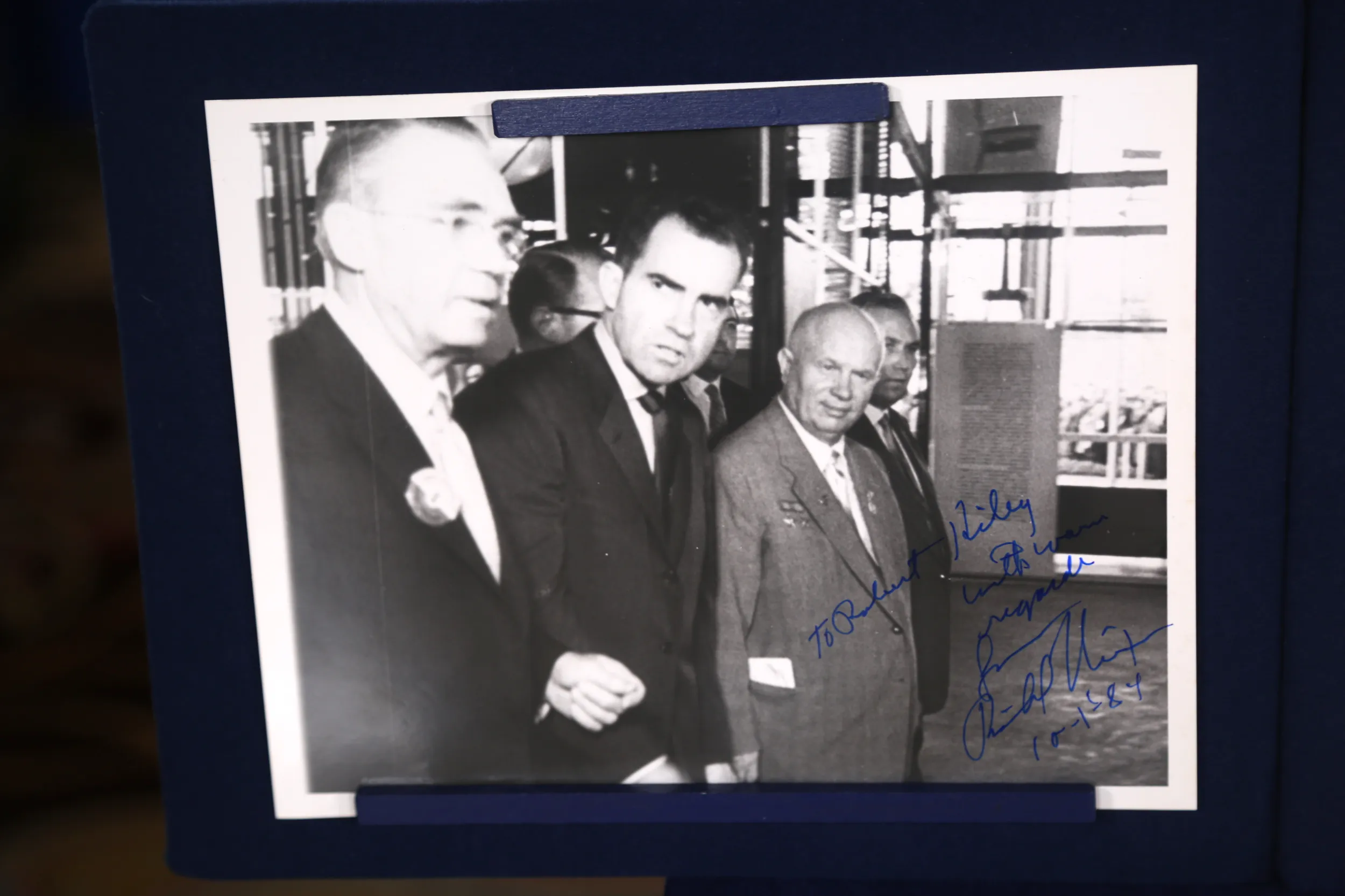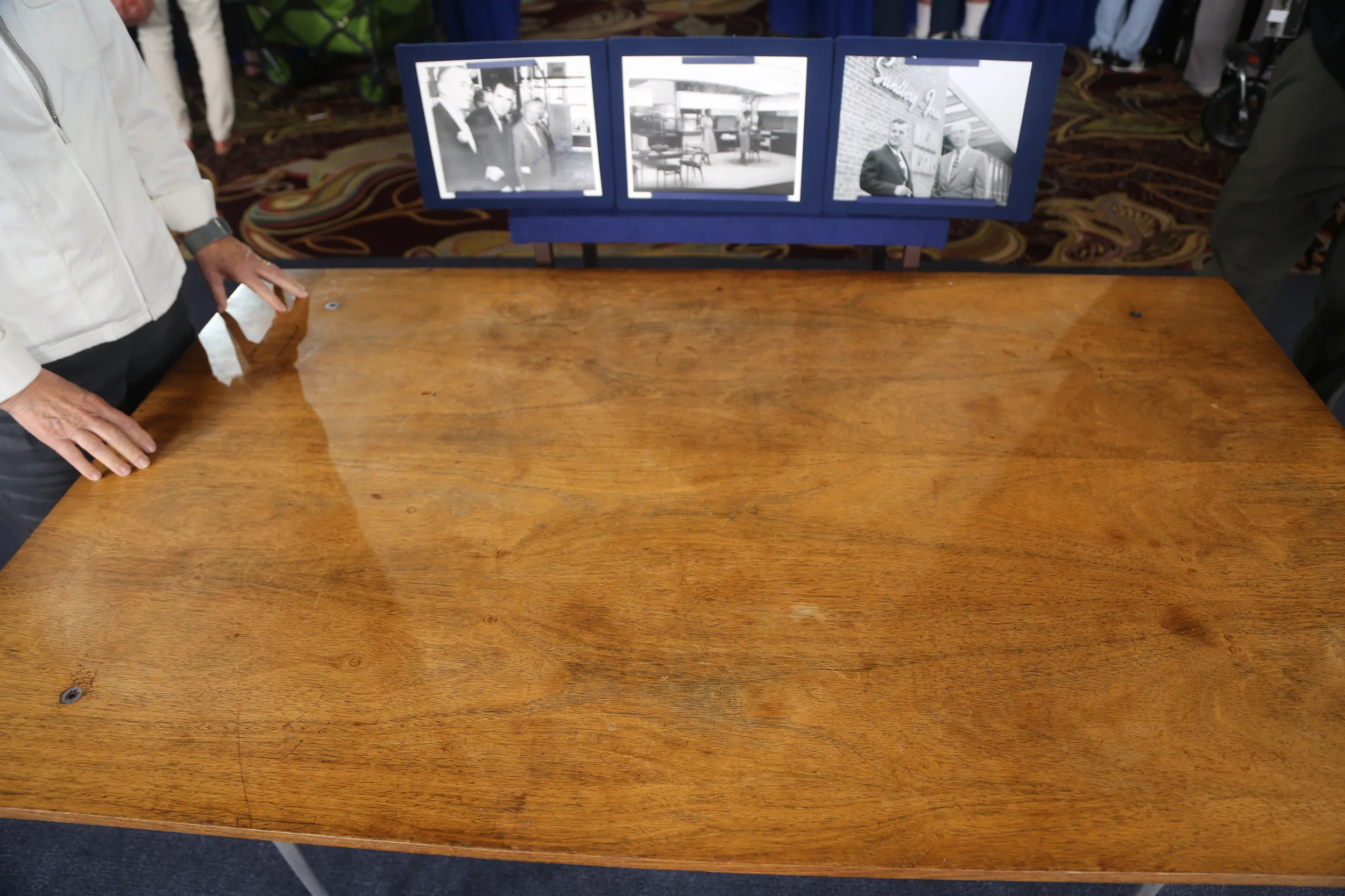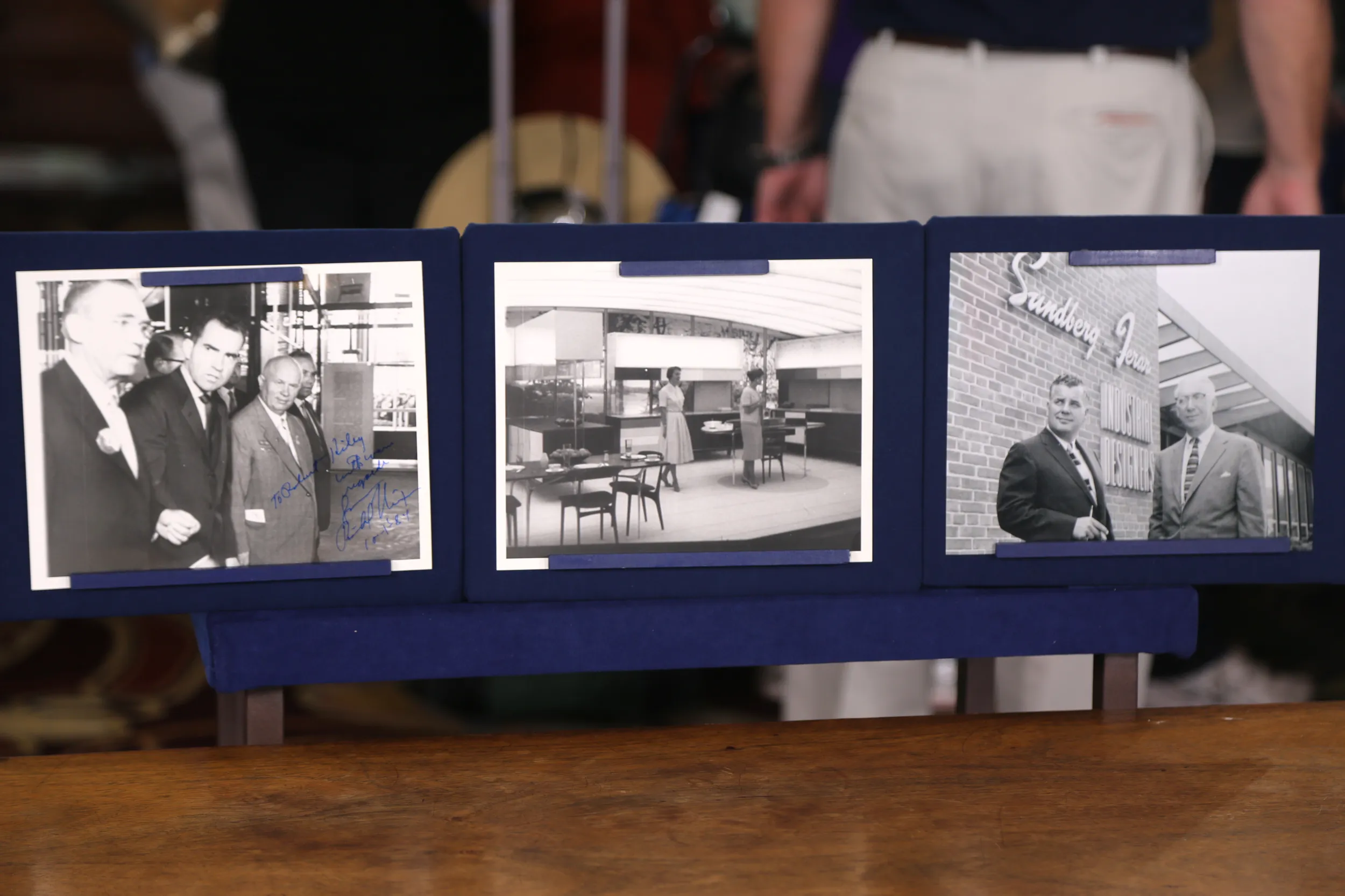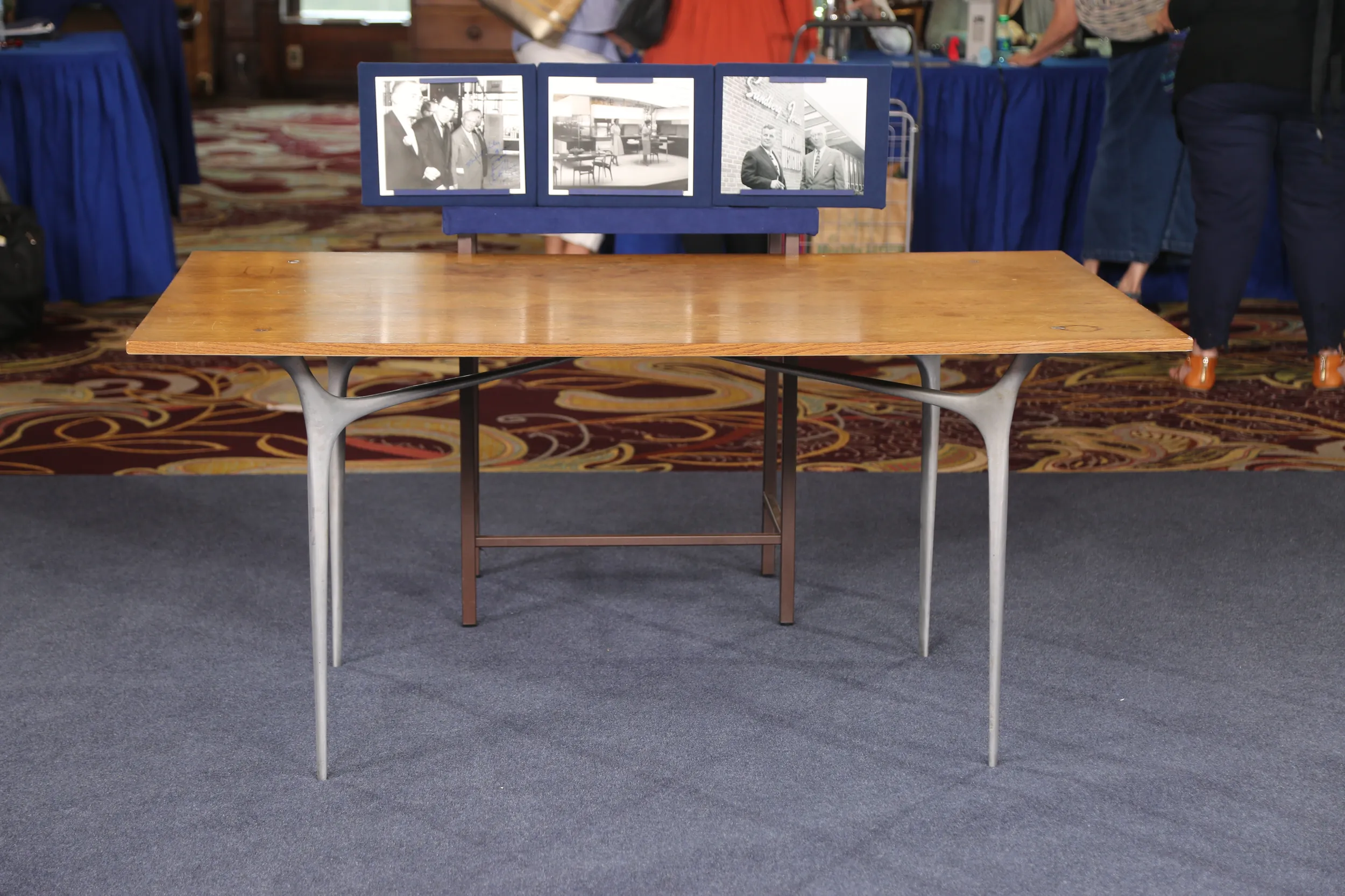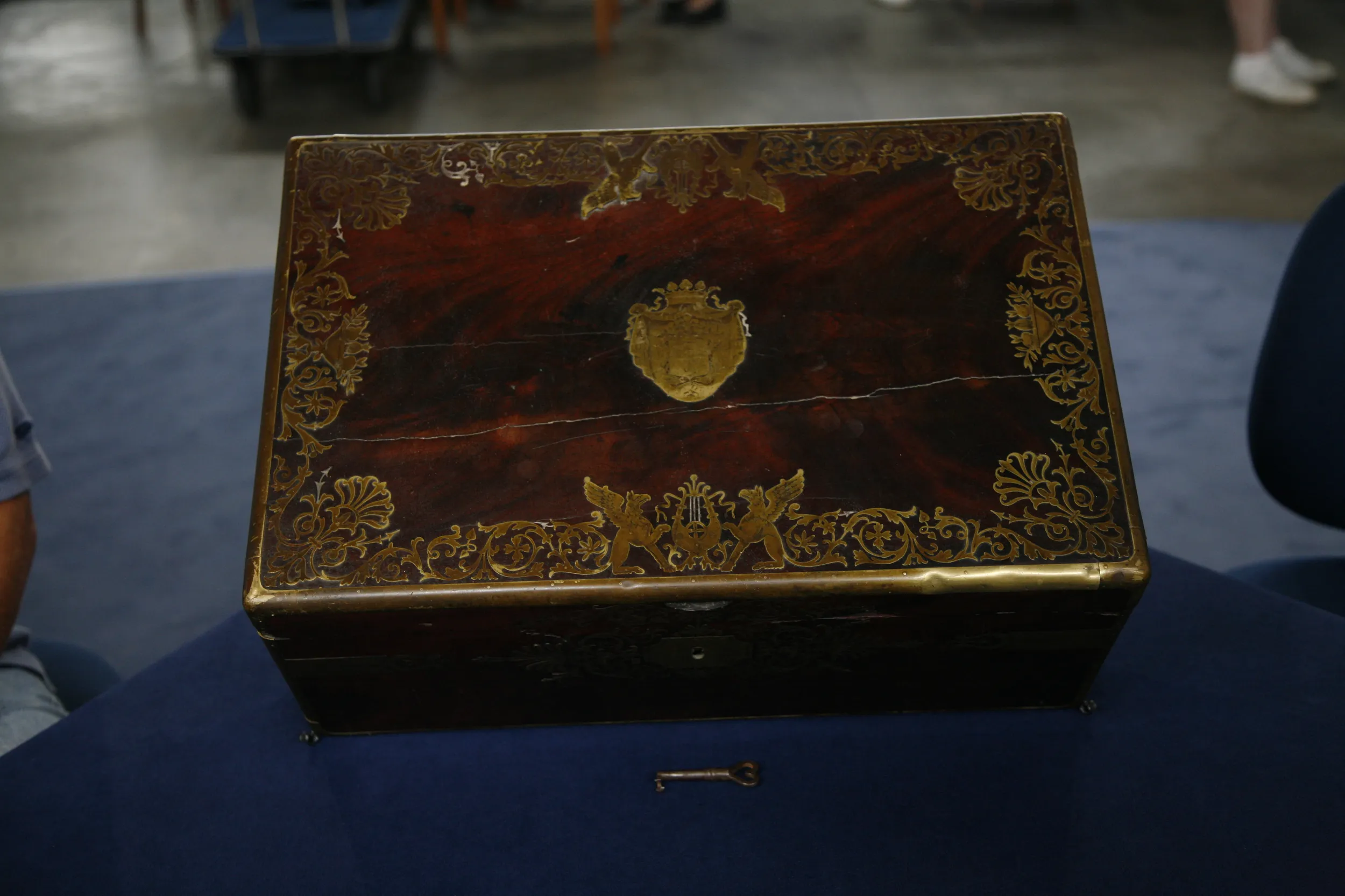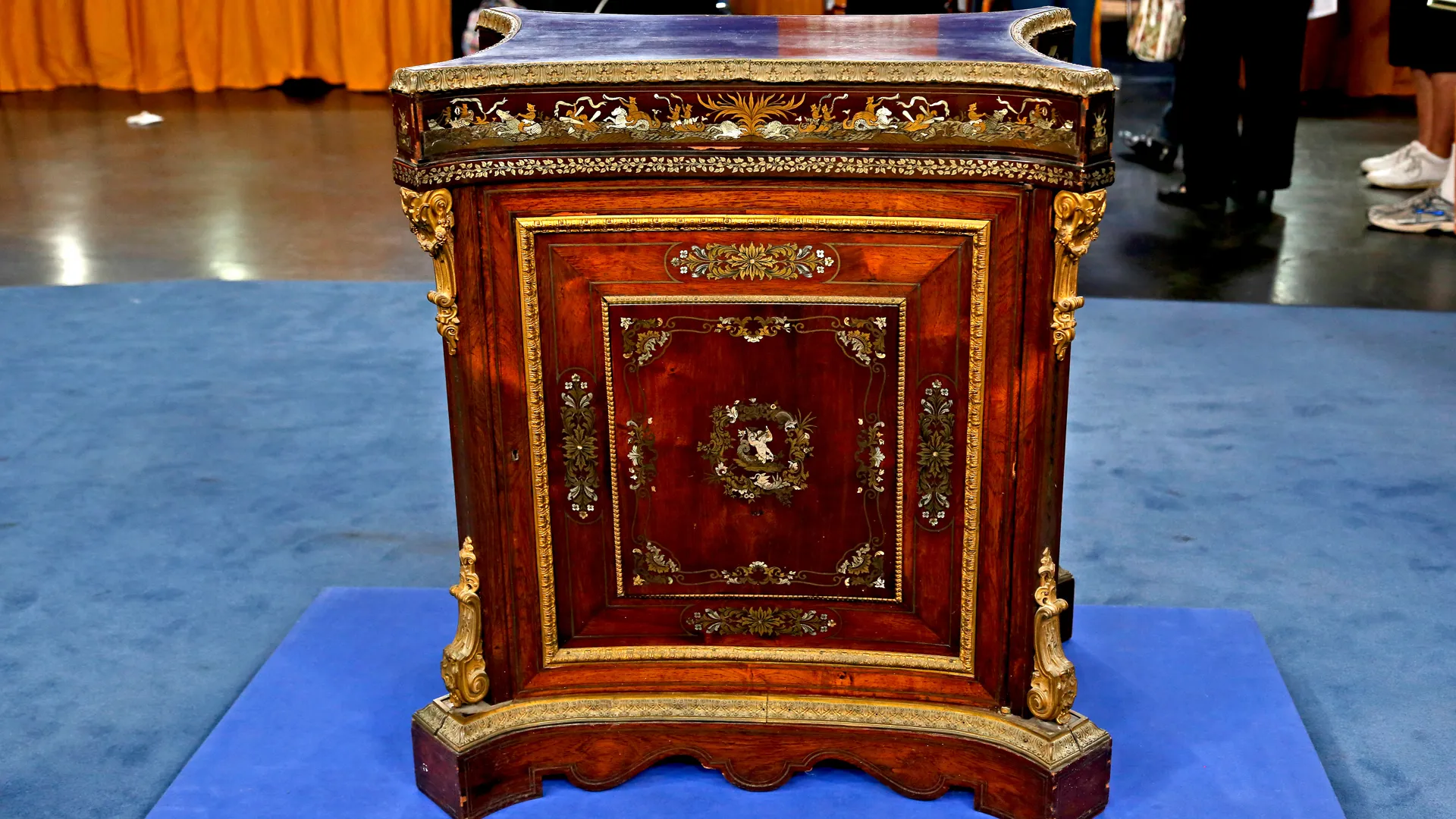GUEST: In 1959, the U.S. sent a kitchen of the future to Moscow for a world exhibition. And they hired a Detroit industrial design firm by the name of Sundberg Ferar. And Carl Sundberg, the founder of this firm, was my father. And the day before the exhibition opened, Vice President Nixon flew to Moscow so that he could ask Khrushchev to come in for a private showing of the kitchen itself. So he took him through the exhibit, and they got to talking about some of the different appliances and stuff that were in the kitchen. And Khrushchev started to get a little testy about it. Now, you had two men that both had tempers at this point. So this conversation got extremely heated. So later on, it got to be known as "the kitchen debate." After the exhibition was ended, this table ended up in my family's kitchen. So this is the table that we ate at and played cards at. Later in the year of 1959, still, we went to the movies, and at that time, movies would be shown with a newsreel at the very beginning. So we watched this newsreel about the kitchen debate.
APPRAISER: Yeah.
GUEST: And we're halfway through it, and my husband, Bob, said, "There's your table." And so we went back, we talked to my dad, and he had never even told us the story of it. We really didn't know anything about it. So I have to say, it's got all the battle scars on it, because we used it as a kitchen table.
APPRAISER: Well, I'll tell you, it's a wonderful table with a great story.
GUEST: Mm-hmm.
APPRAISER: And, basically, word for word, you know, the entire conversation between Nikita Khrushchev and Richard Nixon is online, and you can see the whole thing.
GUEST: Yes.
APPRAISER: And it's a reasonably heated argument, too.
GUEST: Oh, very much so.
APPRAISER: Not only does this piece have a wonderful, historical significance, but it's also a wonderful piece of modern furniture.
GUEST: Yes.
APPRAISER: And in a lot of ways, it sort of displays what's best about modern furniture: The legs are minimal; the top, I believe, is rosewood.
GUEST: Rosewood, yes.
APPRAISER: It's spare, yet it uses the thinness and the discipline of the architecture to make a loud statement.
APPRAISER: You have this, sort of this historical path with all these
GUEST: Right, right.
APPRAISER: different photographs you've got. And this, if I'm not mistaken, is the kitchen itself.
GUEST: That is the kitchen itself. And the photographs we got from the newsreel.
APPRAISER: This, I believe, was your father?
GUEST: That's my dad, Carl Sundberg, and the man on the right is Montgomery Ferar.
APPRAISER: And this last photo?
GUEST: Right. This is the photo that was part of the newsreel itself. We wanted one with the two men together. And then we sent this to Vice President Nixon and asked him if he would sign it for us.
APPRAISER: Yeah, yeah, it's wonderful, it's autographed. So we have Nikita Khrushchev.
GUEST: Right.
APPRAISER: Richard Nixon.
GUEST: Right.
APPRAISER: On some level, this is a very difficult table to appraise.
GUEST: I would think.
APPRAISER: It's only one. This table represents everything good about modern design. If you brought this table to auction...
GUEST: Right.
APPRAISER: I would put $15,000 to $25,000 on it.
GUEST (chuckles): Okay.
APPRAISER: So I also took the liberty, and I hope you don't mind...
GUEST: Okay.
APPRAISER: But of showing the Richard Nixon autograph to our photograph department.
GUEST: Okay.
APPRAISER: And they said that the autograph, the photograph together would be $300 to $500.
GUEST: Okay.
APPRAISER: So on top of the table...
GUEST: All right, a little bonus.
APPRAISER: Another $300, $400, $500 for the photograph.
GUEST: Excellent, excellent. Oh, that's wonderful.
